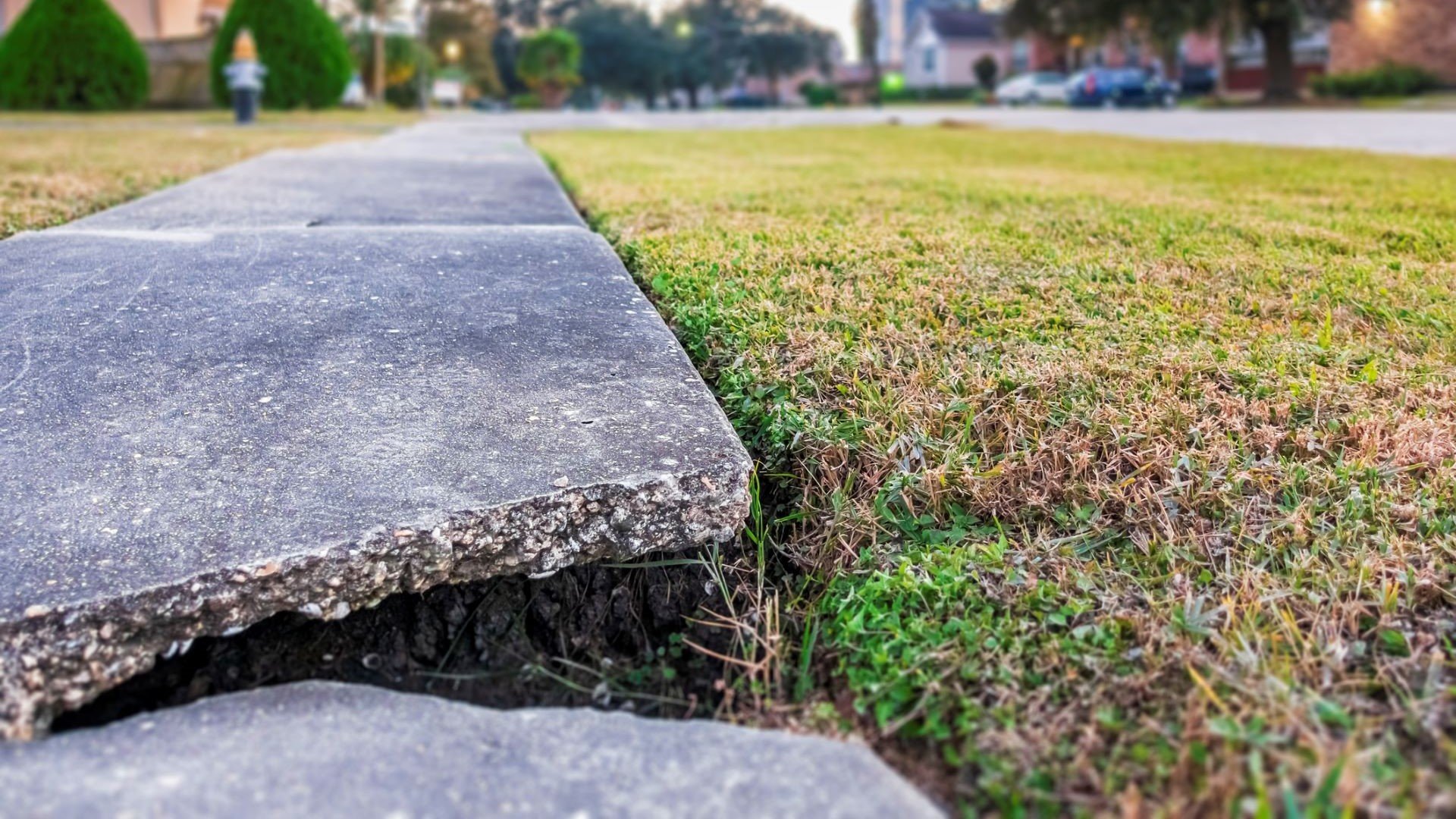Clear and Maintain Campus Sidewalks

Constant foot traffic on campus sidewalks creates a continual slip-and-fall possibility, further exacerbated by the many walkways that must be kept clear of hazards. Many injuries in UE’s slips and falls claims study involved poorly maintained sidewalks. Sidewalk injuries can range from minor bruises or cuts to severe fractures and concussions.
Implement these guidelines to help prevent slips and falls on sidewalks.
Clear debris regularly.
Leaves, trash, pebbles, or other refuse on walkways and stairs can cause accidents. Assign employees to regularly inspect walkways and remove debris. Conduct inspections daily or weekly, depending how regularly the sidewalk is used.
Create a slip hazard and incident reporting system.
How quickly your school responds after a reported slip and fall can make a difference in whether a claim is eventually filed. To ensure notice of incidents and hazards reach the right people on your campus, publicize a clear reporting system and train employees and students how to report. Include this information in training:
- Define slip-and-fall incidents that should be documented. Train employees to identify when a report should be completed.
- Require a report for any slip and fall. Stress that students, teachers, employees, contractors, volunteers, and third parties (whether invited or uninvited) must all report.
- Publicize a simple reporting process. Offer easy ways to report incidents such as an email address, phone number, or reporting software. For examples, see the Rogers State University, University of North Carolina, and Northshore School District slips and falls reporting processes.
Respond to sidewalk hazard reports in a timely manner.
Identify employees responsible for responding to reports. Responsible departments may include Risk Management and Insurance, Public Safety or Campus Security, Residence Life, and Facilities Services. Conduct maintenance or remediation in response to reports, and document steps taken. When you can’t perform maintenance immediately, use signage and physical barriers until the hazard is fixed.
Grant pedestrians right of way.
If bicycles, scooters, skateboards, or skates are allowed on sidewalks, clarify in your policies and signage that pedestrians have the right of way.
Consider video monitoring of high-traffic areas.
When slips and falls occur without witnesses, the complainant’s version of events can be difficult to contest unless there is video evidence. By strategically placing cameras in high-traffic areas, institutions can better document events, especially when used in conjunction with a solid accident reporting system to ensure video for specific events is saved. For additional security camera guidelines, see Use Security Cameras and Closed-Circuit TV on Campus.
Clear snow and ice promptly.
Negligence in snow and ice removal from sidewalks can lead to expensive claims. Once your institution becomes aware of a dangerous condition, such as the likelihood of snow or ice on campus, that triggers a legal duty of care to respond reasonably to the hazard. To promote the prompt remediation of snow and ice, consider these actions:
- Use the National Weather Service (NWS) to help track potential storms. Familiarize yourself with terms the NWS uses to classify weather conditions. The NWS issues advisories when the NWS expects conditions to cause significant inconveniences and hazards.
Watches are issued when severe winter conditions may affect your area but the location and timing remain uncertain. (A Winter Storm Watch is issued 12 to 36 hours in advance of a potential severe storm.)
Warnings are issued when 4 or more inches of snow or sleet are expected in the next 12 hours, or 6 or more inches in 24 hours, or ¼ inch or more of ice accumulation is expected. Search your zip code on the NWS website regularly to learn of upcoming weather events.
- When predictions of a snowstorm or freezing conditions are imminent, alert relevant maintenance teams and outside contractors that services are needed.
- When using a contractor for snow removal services, follow up when there is a snowfall (or a specific request for the contractor’s services) to ensure that the work has been done. Consider requiring your institution’s maintenance personnel to investigate all reports of snow or ice so temporary protective measures occur, such as cordoning off slippery or otherwise unsafe areas.
- Keep the response chain of command short. Avoid having maintenance personnel wait for authority before they can investigate individual reports of snow or ice. Give them direct authority to investigate and take remedial measures.
Assume care for sidewalks located on your institution’s land even when ownership is unclear.
Correct or warn of any dangerous conditions on the property. Doing nothing or seeking clarification without taking corrective measures is insufficient. Institutions remain exposed to liability for any injuries that occur on their property.
Contact the city about sidewalk hazards on city property.
City tree roots extending into campus concrete sidewalks can make the sidewalks uneven. City subway grates expelling steam and frequently changing temperature can crack campus sidewalks. Help transfer potential risk by warning the city of known hazards, such as tree roots and uneven grates. Send a letter to the city advising the city of the hazard. Keep records of that notice.
More From UE
Help Prevent and Respond to Slips and Falls: Lessons From Claims
Slips and Falls Resource Collection
University of Maine System Uses Online Forms to Address Slips, Falls Faster
About the Author
-

Melanie Bennett, Esq., ARM-E
Senior Risk Management Counsel
In her role on UE’s Risk Research team, Melanie dives into timely topics affecting education. Her areas of expertise include protecting minors, enterprise risk management (ERM), technology accessibility, and athletics. Prior to joining UE, she interned at the U.S. Department of Education’s Office for Civil Rights. Melanie serves on the Higher Education Protection Network’s (HEPNet’s) Board of Directors.





